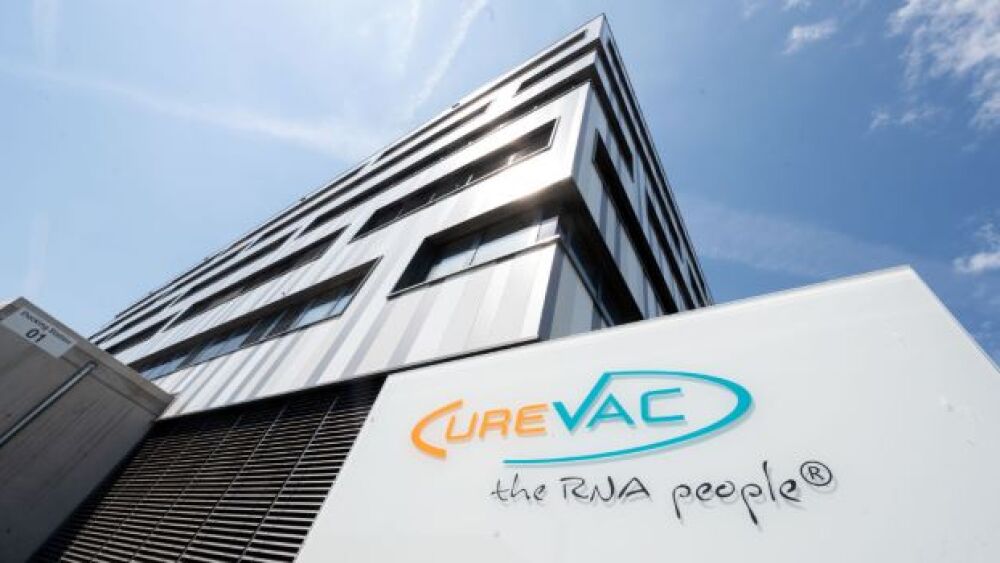The research underlines the progress being made in messenger RNA approaches, as spotlighted by the success of the mRNA vaccines against COVID-19.
Bernd Weissbrod/picture alliance via Getty Images
CureVac NV reported the publication of preclinical work in liver fibrosis with its mRNA therapy. The research was published in the Journal of Hepatology. It underlines the progress that has been made in messenger RNA approaches, as spotlighted by the success of the Moderna and Pfizer-BioNTech mRNA vaccines against COVID-19.
The authors noted, “Messenger RNA (mRNA)-based therapeutics are rapidly progressing to the clinic and hold tremendous potential for benefiting millions of people worldwide. Therapeutic targeting of injuries that require transient restoration of proteins by mRNA delivery is an attractive aspect, however until recently, it has remained poorly explored. In this study we examined for the first time, the therapeutic utility of mRNA delivery in liver fibrosis and cirrhosis, which contributes to millions of deaths, annually.”
Lipid nanoparticles, essentially minuscule balls of fat, were formulated to transport human HNF4A (hepatocyte nuclear factor 4 alpha) mRNA. Liver fibrosis is marked by the creation of scar tissue in the liver, leading to liver impairment and eventual cirrhosis, leading to liver failure, or cancer.
HNF4 alpha is a key regulator in liver metabolism and decreases with disease progression. In the research, four independent mouse models of liver fibrosis were treated with mRNA that encoded for HNF4A. The therapy restored HNF4A levels and significantly decreased liver injury.
The research was conducted in collaboration with the REBIRTH-Research Center for Translational Regenerative Medicine and the Department of Gastroenterology, Hepatology and Endocrinology at the Hannover Medical School in Hannover, Germany.
“Liver fibrosis and cirrhosis contribute to millions of deaths annually and represent a major health care burden worldwide,” said Igor Splawski, Chief Scientific Officer of CureVac. “The results of our study provide the first direct preclinical evidence that HNF4A mRNA therapeutics have the potential to treat liver fibrosis.”
He went on to say, “Within our diverse Protein Therapy pipeline, in which we focus on optimized mRNAs to trigger the production of antibodies or therapeutic proteins, we will continue our collaboration with Hannover Medical School to optimize further HNF4A mRNA therapeutic candidates for liver-specific disorders.”
In their study, the mice received eight repeated injections of 1 and 2 mg/kg of the mRNA formulations. They demonstrated the ability to significantly decrease liver fibrosis and injury and restore cellular processes required to recover normal liver function.
“The lack of approved drugs that robustly inhibit liver fibrosis necessitates rapid development of new anti-fibrotic therapies,” said Amar Deep Sharma, lead author of the study. “Our study provides the first experimental proof that mRNA therapeutics can indeed serve as potential treatment option for fibrosis. Follow-up research is already underway to work toward key milestones that may facilitate the use of HNF4 alpha and other mRNAs as therapeutics for lethal liver diseases.”
On August 16, CureVac published preclinical data for its first-generation COVID-19 mRNA vaccine, CVnCoV, and second-generation candidate, CV2CoV, in non-human primates. The study was performed in collaboration with Dan Barouch at Beth Israel Deaconess Medical Center and evaluated the vaccination of cynomolgus macaques with either of the vaccines. The second-generation vaccine showed better activation of innate and adaptive immune responses, with a faster response onset, higher antibody tires, and more potent memory B and T cell activation.
This is a vaccine being developed in partnership with GlaxoSmithKline.
Rino Rappuoli, Chief Scientist and head of GSK Vaccines R&D, said, “The mRNA technology is a key strategic priority for us, and we are investing significantly in a number of mRNA programs focused on the collaboration with CureVac. The strong immune response and protection in preclinical testing of this second-generation mRNA backbone are very encouraging and represent an important milestone for its further development.”





